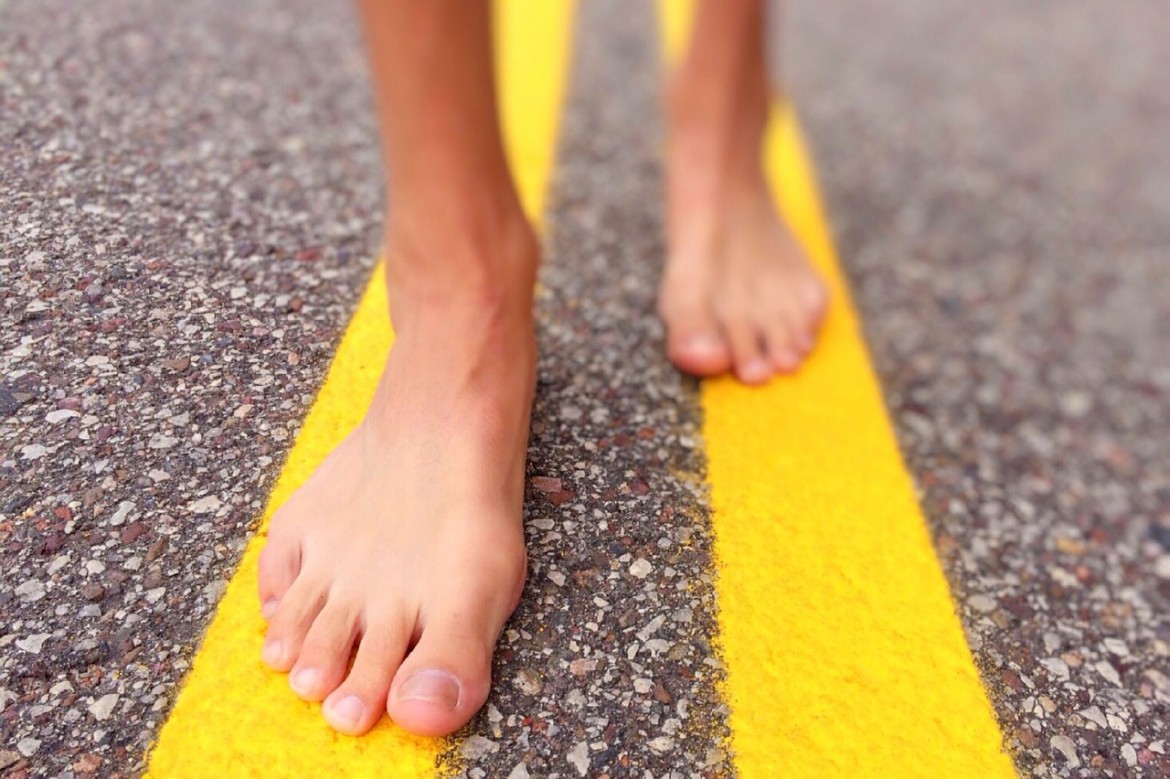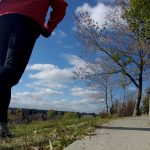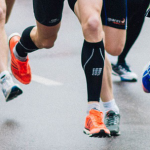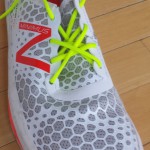A Rocky Road
Who among us have never thought of shedding those 2″ thick blocks of ethylene vinyl acetate (EVA) we strap to our feet and sliding into something a little sleeker, a little sportier? You’ve probably eyed the minimalist shoes on the wall at the running store. And maybe you’ve even thought about transitioning to those same shoes. And I say good for you.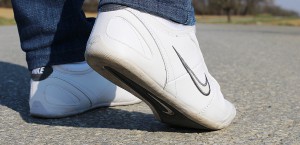
They’re sleek. They’re sporty. They’re young. And they feel like you’ve got nothing on.
But making the transition to minimalist shoes from the high heels we’ve grown up with can be a rocky road. A road where you feel all the rocks.
The Evidence
Preliminary results of a study conducted at the Human Performance Lab (HPL) at the University of Calgary, predicts that runners who’ve run in cushioned shoes their entire lives may be in trouble when they strap on minimalist shoes. It found that forces on the knee joints were reduced but that forces on the ankle and toes were problematically higher.
As part of the study, the subject runners – lifelong running shoe wearers who had not worn minimalist shoes – were placed in minimal shoes and instrumented and recorded running in the controlled environment of the HPL. The runners were given no coaching in the use of minimalist shoes and forces and kinematic angles were measured at both their normal stride lengths and 90% of their normal stride length (to mimic the effect of the shorter stride length barefoot runners use).
The researchers found that the runners tended to continue to heel strike – at less of an angle than with their cushioned shoes – but heel strike nonetheless.
Heel Strike Woe (Wo!)
Heel strike happens when the heel of your running shoe strikes the ground before the rest of your shoe.
It’s something many, many, many of us do.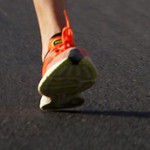 The reason many, many, many of us do is that it’s easy. Our cushioned shoes have always had cushioned heels that make sure heel strike doesn’t hurt every single time. It lets us take great long strides. It lets us cover a lot of ground in a single stride.
The reason many, many, many of us do is that it’s easy. Our cushioned shoes have always had cushioned heels that make sure heel strike doesn’t hurt every single time. It lets us take great long strides. It lets us cover a lot of ground in a single stride.
But heel strike’s a problem. Striking with your heel first actually puts the brakes on.
Baring the Problem
If you were to ditch the shoes completely, go barefoot, and try to run on the sidewalk or the street with heel strike, you’d see what I mean.
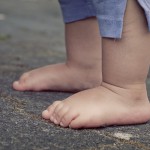 The first thing you’d notice is the jarring. Just how damned uncomfortable it is as your heel hits the pavement trying to slow you down. And then you notice the pain. And then there’s the road rash.
The first thing you’d notice is the jarring. Just how damned uncomfortable it is as your heel hits the pavement trying to slow you down. And then you notice the pain. And then there’s the road rash.
With no shoes, the phenomenon of heel strike pretty quickly has to take a hike. Bare-footing forces you to land more mid-foot – your body instinctively tries to spare your heel and land as lightly as possible to spread out the force on the bottom of those tender tootsies.
Heel strike is a bad habit we’ve picked up in our lives as runners dependant on EVA. The problem is, this form of running we’re doing brings with it over time, no matter how shoe companies try to deal with it, wrecked knees and IT band troubles (more on that in another post).
Going For It
And not only is heel strike a hard habit to shake, it’ll get you into trouble when you go for the minimalist look. The good news is wearing minimalist shoes looks cool, it’ll spare you the contusions of barefoot running, and done properly, over time, it should spare your knees. The bad news is nobody told you it’s a whole different style of running from what you and EVA have been doing your entire life.
The trick is to 1) make the change very, very, (very?) slowly, 2) become a mid-foot striker, and to 3) recognize there’s an achilles heel in all this.
Going Slowly
Slowly, slowly, slowly. Start on grass. Once a week. Up the block. Walk back.
Going Mid-foot
Become a mid-foot striker – make a conscious effort to feel your feet landing flat – even in your running shoes. The feeling should be of being upright, chest just a little ahead of your shoes, and kicking back rather than reaching forward with each stride – kind of what you’re seeing in the photo below.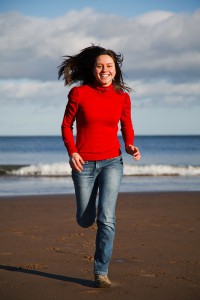 The flatter you land, the less the braking force on your knee, the more the muscles of your legs get involved in cushioning, and the healthier you’ll be over the long run.
The flatter you land, the less the braking force on your knee, the more the muscles of your legs get involved in cushioning, and the healthier you’ll be over the long run.
Going Long – Calf and Achilles That Is
And speaking of long, build up your calf and achilles strength and length. You can tell when you’ve got problems – when you’re starting this up too quickly – when your calves are sore in the morning when you get out of bed. Tight is, well, okay. Sore, no good.
I know that of which I speak. My initial switch to minimalist shoes resulted in my taking 8 months off running to heal a wrecked left achilles. When I finally gave up and went to see a physiotherapist, it was another 6 weeks but he got me back on my feet. Without physio I’d still be on the home remedy. And I wouldn’t have learned the value of lengthen and strengthen.
It doesn’t take much. Lengthen and strengthen by doing stair presses, 2 x per day, and stretches once a day. They’re not hard to do. I’ll show you in another post.
Getting Smart
So, sure those shoes look good on the wall. And damn, they look good on (do I have to get my pants hemmed?). But they’ll be staring at you from the closet while you hobble from one physio appointment to another unless you give a pinch of thought to how to make it work.
After all, we might have been Born to Run, but we’ve been Raised on EVA.
